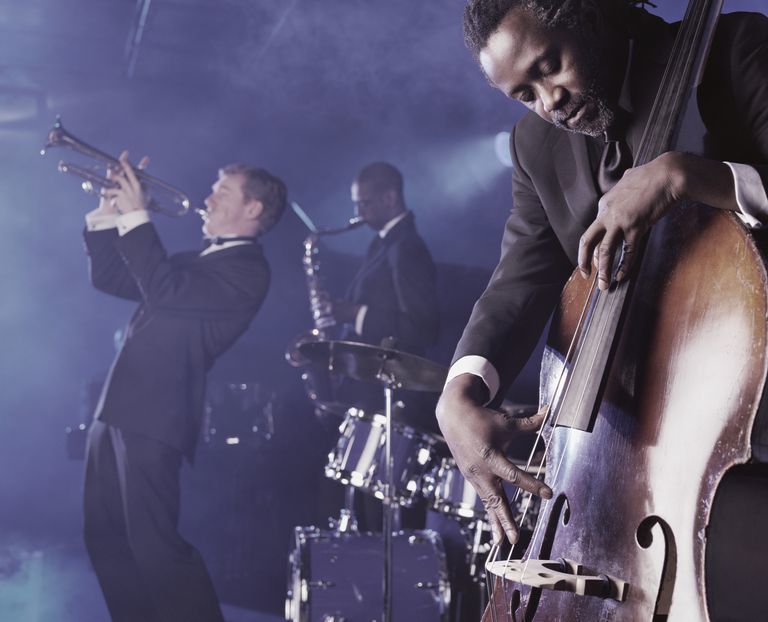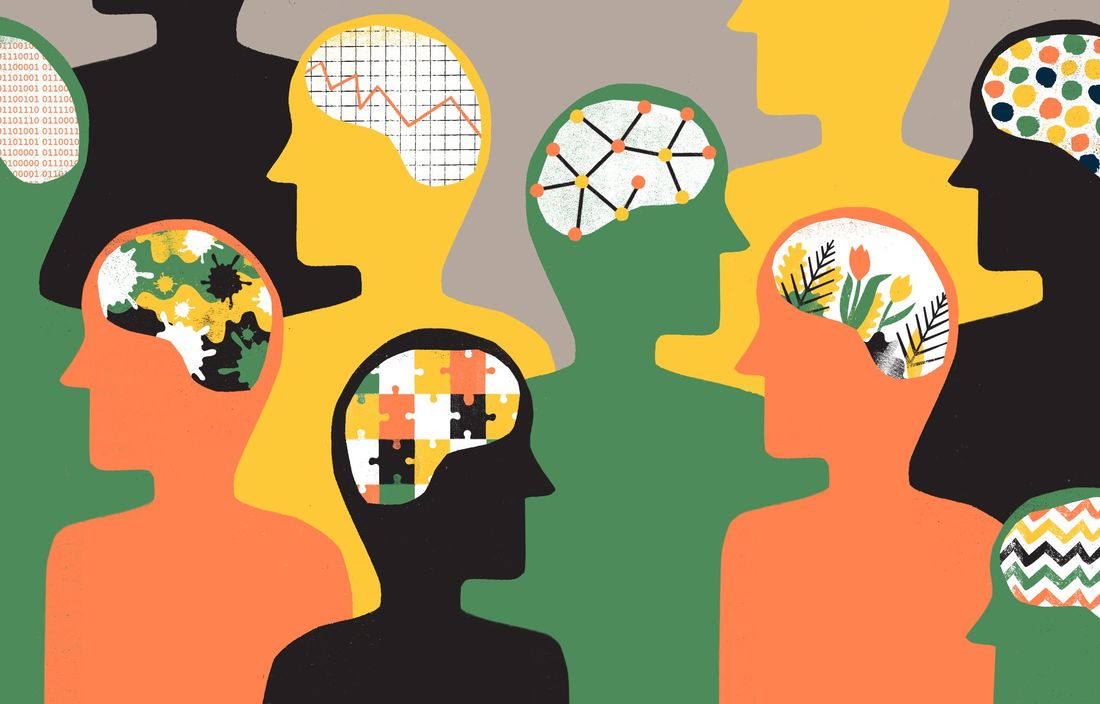The challenges facing teams in organisations these days are many. They are often dealing with acute time pressures, complex and rapidly changing environments, competing demands and needs, and the constant balance between individual needs and the needs of the team. The ability to harness diverse views, opinions and skillsets has become a critical factor in teams achieving success. Teams that lack diversity can be severely limited in their ability to innovate and respond rapidly to changes in the environment, and to successfully plan and execute tasks. As Kyra Ward suggested recently “the ability to establish, develop, and maintain teams of diverse individuals is critical to the organisation’s success…(and) that ‘magic happens’ when completely different people with unique skill sets, personalities, and motivations can cooperate and collaborate” (2019).
In this sense diversity refers to not just race, gender or culture but also the sometimes more subtle differences between people in how they view the world, their unique passion, contribution and strengths.
“To perform in investments you need significant cognitive diversity on the team. More than age, gender and ethnicity… cognitive diversity means genuinely different thinking styles. People approach problem solving in different ways: some people start with data, some start with a process, some dive in and rely heavily on intuition. Welcome the wisdom of the crowd into your office; it can provide a significant edge.” Ware & Kozlowski (2017)
Whilst organisations have acknowledged this for many years, the actual practice of harnessing diversity continues to be very challenging for most teams. The delicate balance between uniformity and agreement on the one hand and managing diverse opinions and the needs of the individuals on the other, is often a difficult one to achieve. Consciously or unconsciously teams end up supressing differences in order to satisfy expediency or reach agreement. This can result in short-term success but in the longer term the erasing of difference leaves an organisation vulnerable to change and competition.

A great metaphor for this is in the performance of a jazz group. Unlike many other forms of ensemble music performance, jazz relies on a group of musicians being clear on what they are doing, but without a prescribed chart or manuscript. Instead they rely on each other’s interpretation of the melody and being able to understand the unique contribution of each musician. As Grant Ackerman from the Columbia Business School says,
“Unlike classical orchestras…jazz ensembles rely on shared leadership, collaboration, improvisation, and a heartfelt humility that honours every individual’s contribution.”
If they all played the same melody it would be uninspiring and boring. If they were not able to listen and respect each other’s different skills, strengths and passion, they would end up nullifying each other’s contribution. When these musicians can respect their individual talents and skills and leave space for each other to contribute at the right time, then “magic happens”.
The problem is that many teams and organisations don’t have a framework for understanding these differences, let alone harnessing them successfully. Inevitably in this vacuum teams start to personalise the differences which increases the chance that people will feel excluded or have to fight to be heard.
One way of resolving this is through the Enneagram. The Enneagram system of personality not only provides insight into our underlying drive and how we show up in the world, but it is also based on the fundamental assumption that all nine types are “equally beautiful and problematic”[1]. As someone recently commented, “there is no Enneagram Ten”, meaning there is no Enneagram type that is better than the others. All nine Enneagram types have unique and specific strengths as well as disowned “shadows” or parts that are denied. This means that for each of us there are eight other Enneagram types that are driven by a different underlying need and bring a different set of skills to ours in any given situation. Until we have a means of understanding this, we can tend to think that everyone sees the world in the same way that we do. As Albert Einstein wrote in 1936, “What does a fish know about the water in which he swims all his life?”. The water we have swum in our whole life is our particular Enneagram type, with its habitual focus of attention, core need and view of the world. As we explore and come to understand the Enneagram, we discover that, “Other people don’t view the world the way we do; different people can look at the same situation and see completely different things” (Beatrice Chestnut, 2017).
A framework such as this can allow us to both appreciate that there are other ways of seeing the world that are equally valid, and at the same time de-personalise these differences. We can understand that the other people in our team may see the world quite differently, but that is not necessarily just a reflection of a particular person. This, in turn, can allow us to suspend judgement of others, and begin to value their difference from us.
So how do we apply the Enneagram to fully leverage the potential of the diversity in the team?
To truly take advantage of difference in a team, we have to be able to tolerate, accept and value that difference. Kyra Ward terms this “harmony”, and describes it not as the absence of conflict, but the ability to create a space where conflicting opinions and perspectives can be voiced, and the unique qualities and contributions of each type are embraced. This has a distinct parallel with the path to growth for us as individuals. From the Enneagram point of view, we grow as individuals when we can:
- Observe ourselves in action, particularly our habitual patterns of behaviour and fixations,
- Face and accept the parts of ourselves we have disowned – i.e. our ‘shadow’, and deal with the feelings that this inevitably generates in us,
- Act with choice and awareness, thereby becoming greater than our type.
In a team, the equivalent process is one of:
- Acknowledging the different types and subtypes in the team, and understanding each type’s specific drive and focus of attention,
- Recognising the unique strengths and capabilities that each type has as a consequence of this drive and focus of attention, and
- Utilise these strengths by inviting people to voice their differing opinions and identify how they could apply their unique strengths in any given situation. Sometimes this may involve allocating roles on a specific project according to the individual’s natural strengths or even assigning a role more permanently on this basis.
For example, I was working with a small team in the professional services industry where the team members often felt underutilised and at the same time frustrated by the tasks they were being asked to perform. Upon further investigation we discovered that the business model employed was a very traditional professional services model where each person was responsible for winning and delivering their own work. However, within the team there were five different Enneagram types – a Competitive Achiever (Enneagram Three), an Intense Creative (Enneagram Four), a Quiet Specialist (Enneagram Five), and two Enthusiastic Visionaries (Enneagram Seven). Each of these individuals had very different strengths, views of the world, interests and passions, and found different parts of their role rewarding. By identifying and acknowledging these differences, rather than trying to erase them, the team were able to create more specialised roles that played to these strengths, but still allowed each team member room to grow and develop.
Why do teams find this so difficult?
For one thing, teams are often surprisingly homogenous from an Enneagram perspective. The pull to create teams made up of similar types, consciously or even unconsciously, is amazing. People are instinctively drawn to select “like for like” and often end up with surprisingly similar Enneagram types. Even teams that have different Enneagram types may have subtypes that are very similar. This is often a revelation to a team and brings to light how much they have perhaps unconsciously avoided diversity. This does not necessarily mean that leveraging diversity will be impossible in such a team, but the range of diversity is going to be on a more narrow scale and take more conscious effort to stimulate debate and differences in opinion.
Secondly, as Ginger Lapid-Bodga pointed out in 2014, our Enneagram type can implicitly be favoured or rejected depending on the particular organisational culture. For example, some teams might favour more achievement focused individuals, giving Enneagram Threes greater power and voice, whereas another team might favour new ideas and innovation, giving Enneagram Sevens more status. In so doing, the other eight types in the team are seen as less important or valuable, and the overall diversity in the team is diminished. Similarly, a team that is more action focused may subtly dismiss a person in the team who is naturally more feeling centred, thus limiting their overall diversity and strength as a team.

Finally, the acceptance of other Enneagram types is largely dependent upon our acceptance of the ‘diversity’ within ourselves. More specifically, to what extent have we been able to face and accept our ‘shadow’, or the parts of our self that we have considered unacceptable? If we are unable to accept these parts of our self, the self-rejecting part of ourselves becomes “other rejecting”. We end up judging and criticising the other Enneagram types in much the same way as we have been judging and rejecting our shadow and defending ourselves against acknowledging these parts of our self. In a team this can end up in the team implicitly or sometimes explicitly rejecting individuals that represent that part of themselves.
This can play out in teams in the form of either acting as if everyone else should be more like me, or judging and stereotyping others on the basis of their Enneagram type. Instead of building a bridge between the different Enneagram types in a team, this attitude results in greater divisiveness and conflict.
For example, imagine a team where the majority of individuals were Enneagram types that tended to focus on the positive in any situation, like Enneagram Sevens (the Enthusiastic Visionaries) or Enneagram Nines (Adaptive Peacemakers). Although Sevens and Nines differ fundamentally in their core drive in the world, they both are habitually focused on the positives and avoid anything negative that might bring them into contact with their own pain or discomfort. If these individuals have not learnt to acknowledge the blind spots of their type, they may find it difficult working with someone who has a natural inclination to focus on the negatives or even the risks, such as Enneagram Six (the Loyal Sceptic) or Enneagram Four (the Intense Creative). Again, although both these types are very different in their energy and underlying drive, they are both comfortable calling out the ‘elephant in the room’, and in fact feel driven to name uncomfortable feelings and in the case of the Enneagram Six, the risks of what could potentially go wrong. In such as team, these individuals may feel less important, scapegoated or ostracised for challenging the status quo of the group. However, if individuals in the team are able to accept both the good and bad within themselves, they are more likely to value the opposing view brought by the different Enneagram type.
Acknowledging and integrating our shadow requires us to face parts of ourselves that we consider ‘bad’ or feel ashamed of and begin to accept these aspects of our self without excusing them. When we face these parts of our self, we inevitably feel anxiety and uncomfortable feelings that we have pushed away in the past, so accepting these requires an ability to tolerate these uncomfortable feelings on the path to greater self-acceptance. If we are able to do this, we not only become more whole ourselves, but we develop the ability to accept and value those in our team who are different from us.
Ultimately it is this ability to face all of who we are, “warts and all”, and to be more aware of the value each Enneagram type brings to a team, that will enable us to create a diverse and successful team. Through leveraging the strengths of each Enneagram type we can build a whole that is truly greater than the sum of its parts. In my next article I will explore the specific strengths each type brings to a team, and how best to harness these.
References
Chestnut, B. (2017) The 9 Types of Leadership: Mastering the Art of People in the 21st Century Workplace. Post Hill Press New York.
Einstein, A. (1995) Out of My Later Years Chapter 2: Self-Portrait (Essay dated 1936), Citadel Press Book: Carol Publishing Group. New York.
Lapid-Bogda, G. (2014) Diversity and the enneagram: a provocative topic. https://theenneagraminbusiness.com/
Ward, K. (2019) Finding Harmony in Diverse Teams. Integrative Enneagram Solutions.
Ware, J. and Kozlowski, B. (2017) Teaming Effectively: 3 Key Factors.
[1] Lucille Greeff
